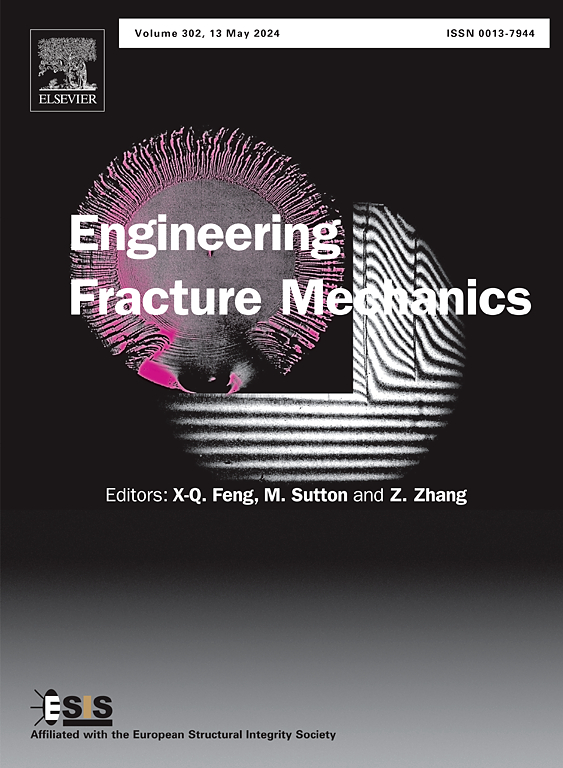IF 4.7
2区 工程技术
Q1 MECHANICS
引用次数: 0
摘要
采用双悬臂梁(DCB)法结合数字图像相关(DIC)技术测试了层压扁竹材(LFBL)的纵向模一断裂特性,并分析了初始裂纹长度(a0)、试样高度(H)和试样厚度(B)的影响。结果表明,裂纹扩展主要归因于较弱地层组织的破坏,并伴有纤维架桥现象。随着 B 的增加,试样的破坏模式逐渐从韧性破坏转变为脆性破坏。a0 对临界应变能释放率(GIc)没有影响。当 B 和 H 满足 B/H ≥ 0.6 和 H ≥ 40 mm 的条件时,GIc 稳定为常数,这表明它是材料的固有特性。在各种理论方法中,使用顺应性校准(CC)方法和修正顺应性校准(MCC)方法计算的结果与本研究提出的直接测量(DM)方法计算的结果接近。本研究获得的 LFBL 纵向模式 I 断裂韧性值为:临界应变能释放率 GIc = 0.77 N/mm。本文章由计算机程序翻译,如有差异,请以英文原文为准。
Mode-Ⅰ fracture of laminated flattened-bamboo lumbers: An experimental study based on the double cantilever beam method and DIC technology
The longitudinal Mode-I fracture characteristics of laminated flattened-bamboo lumber (LFBL) were tested using the Double Cantilever Beam (DCB) method in combination with Digital Image Correlation (DIC) technology, and the effects of initial crack length (a0), specimen height (H), and specimen thickness (B) were analyzed. The results showed that crack propagation was primarily attributed to the failure of the weaker ground tissue, accompanied by fiber bridging phenomena. As B increased, the failure mode of the specimen gradually shifted from ductile to brittle failure. The a0 had no effect on the critical strain energy release rate (GIc). When B and H satisfied the conditions of B/H ≥ 0.6 and H ≥ 40 mm, GIc stabilized to a constant, suggesting it is an inherent property of the material. Among various theoretical methods, the results calculated using the Compliance Calibration (CC) method and the Modified Compliance Calibration (MCC) method were close to those obtained by the Direct Measurement (DM) method proposed in this study. The values of the longitudinal Mode-I fracture toughness of LFBL obtained in this study is: critical strain energy release rate GIc = 0.77 N/mm.
求助全文
通过发布文献求助,成功后即可免费获取论文全文。
去求助
来源期刊
CiteScore
8.70
自引率
13.00%
发文量
606
审稿时长
74 days
期刊介绍:
EFM covers a broad range of topics in fracture mechanics to be of interest and use to both researchers and practitioners. Contributions are welcome which address the fracture behavior of conventional engineering material systems as well as newly emerging material systems. Contributions on developments in the areas of mechanics and materials science strongly related to fracture mechanics are also welcome. Papers on fatigue are welcome if they treat the fatigue process using the methods of fracture mechanics.

 求助内容:
求助内容: 应助结果提醒方式:
应助结果提醒方式:


